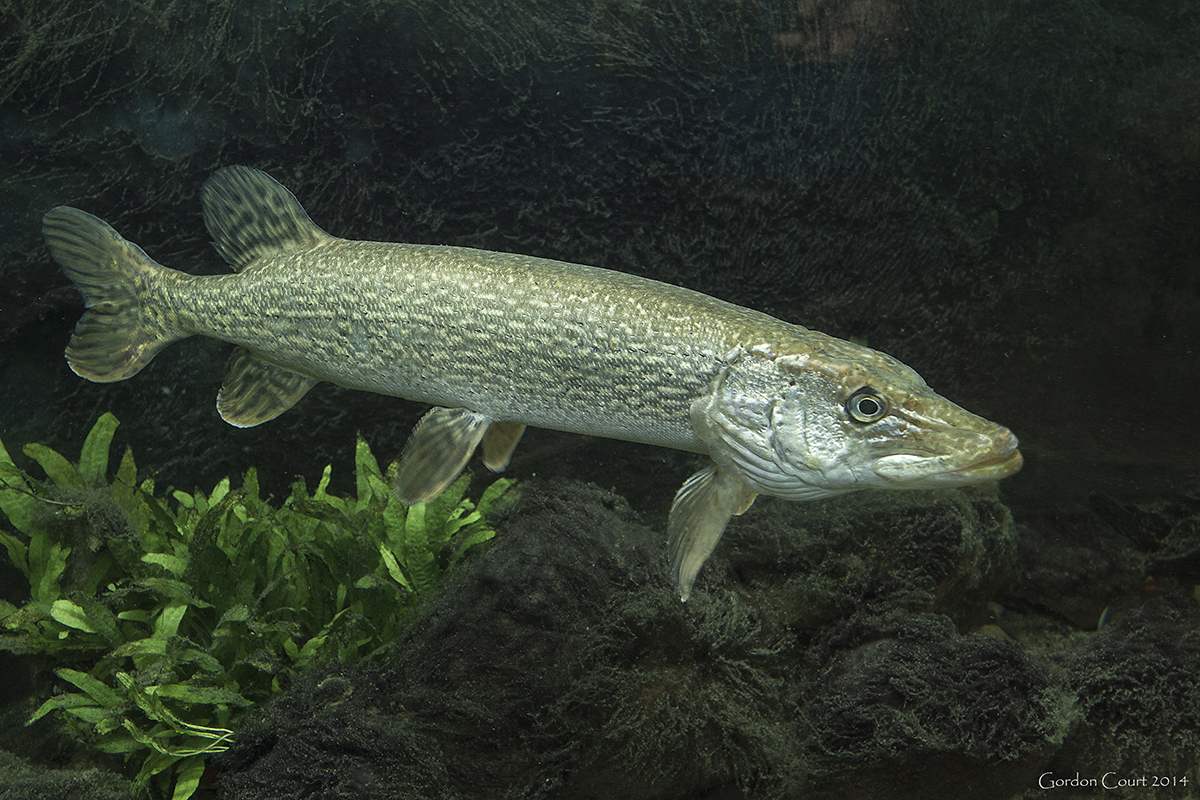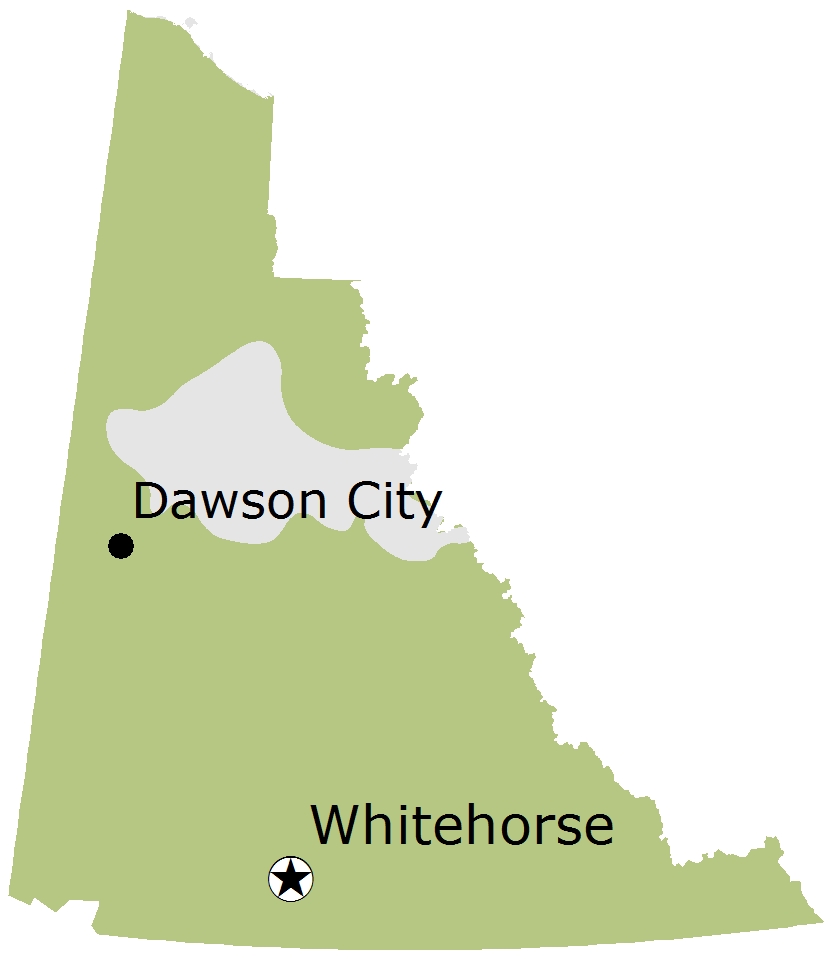
Credit: Gordon Court
Name
- Common name: Northern Pike
- Scientific name: Esox lucius
- Order: Esociformes
- Family: Esocidae
Also known as
Pike, Jackfish, Slough Shark, Snot Rocket
Viewing opportunities
- Look for pike in small, shallow lakes, shallow bays in large lakes and in the sloughs and backwaters of large rivers.
- Pike will lie motionless and well camouflaged among the shallow water vegetation, waiting to pounce on anything that comes too close.
- Pike are known to splash at the surface while chasing prospective mates.
Description
- Long, flat “duck-like” snout; large mouth with many sharp teeth.
- Elongated body with a flattened snout.
- Dorsal fin close to the tail and not adipose fin.
- Dark green colour across the back, mottled down the sides with light yellow spots, fading to a whitish belly.
Fast facts
- Length: 40 to 110 cm
- Weight: 1 to 12 kg
- Habitat: Freshwater
Conservation status
- Yukon: S5 (Secure)
- Global: G5 (Secure)
Yukon population estimate
Not determined.
Behaviour
Northern Pike are the most widely distributed freshwater fish in Canada. They are usually solitary and highly territorial. They rarely move more than 500 m, except during spawning time. They prefer shallow, weedy areas close to shore, and calmer rivers. They will often winter in deeper rivers and lakes. They spawn in spring, right after ice-out, in shallow water with vegetation.
Diet
Aquatic insects, crustaceans, amphibians, fish, small mammals and birds.
Distribution

Pike and people
- Pike are a popular choice among anglers as they are easy to catch and exciting on the line.
- They can make a great meal if they are taken in cold northern waters.